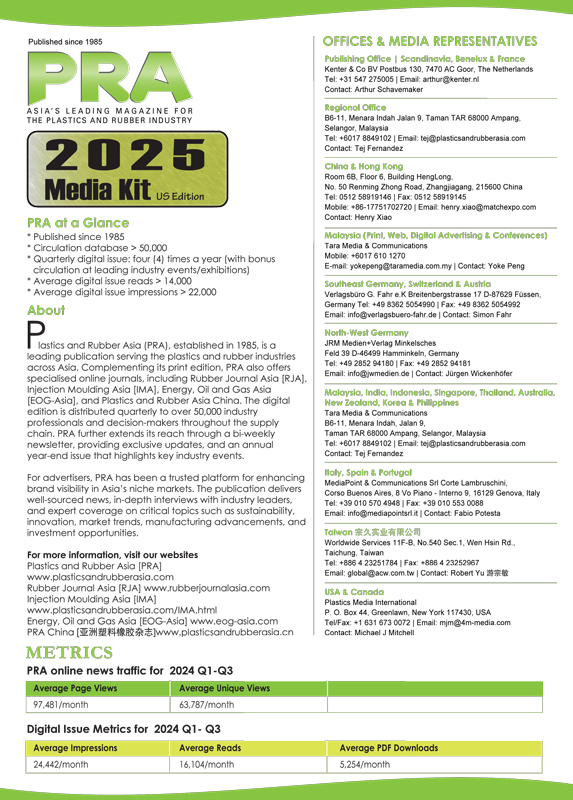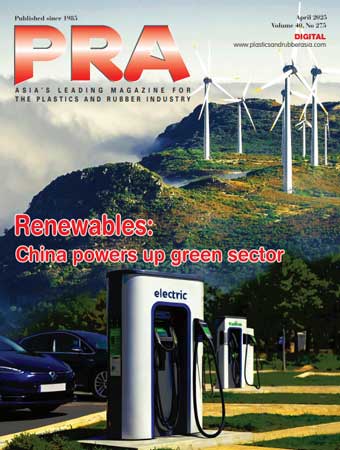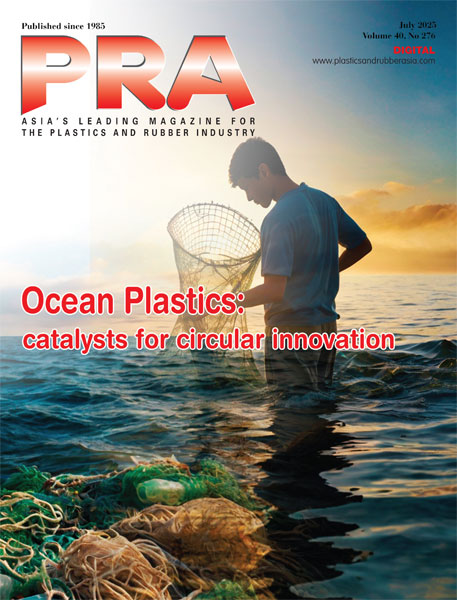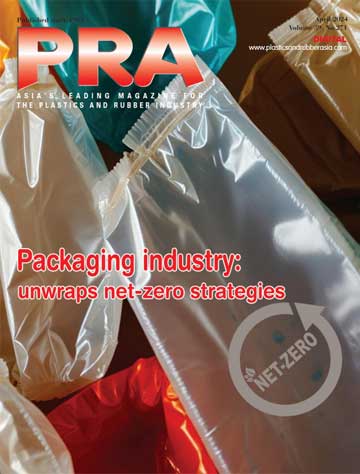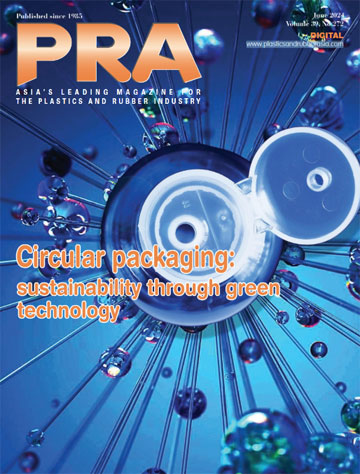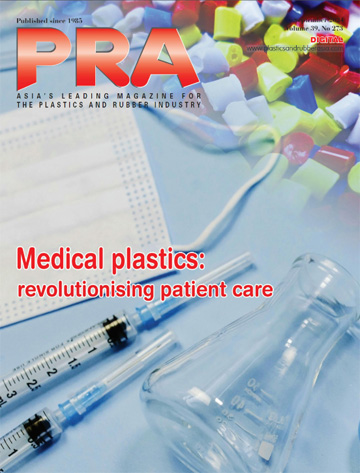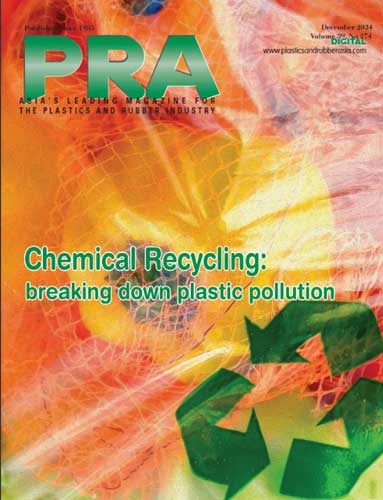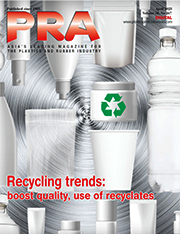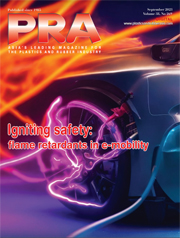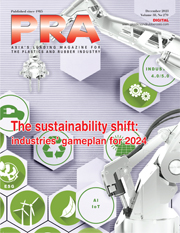Electrical/Electronics at K2025
BASF, Mocom offer recycled alternatives
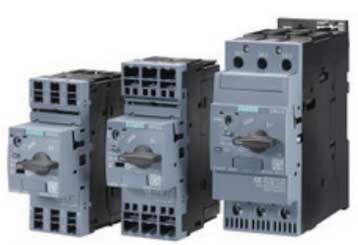
German materials firm BASF will showcase a Siemens circuit breaker using plastic components made from biomethane derived from recycled biowaste; biomass-balanced (BMB) Ecoflex polybutylene adipate terephthalate (PBAT), used in the compounding of biopolymers. Both materials offer the same quality and performance as conventional plastics and the material changeover in the Sirius 3RV2 circuit breaker production will reduce the emission of carbon dioxide equivalents by around 270 tonnes/year.
With the mass balance approach, various alternative raw materials, such as biomethane, bio-naphtha or pyrolysis oil, can be integrated into the value chain. The bio-naphtha and biomethane used by BASF are certified as sustainable according to established systems such as ISCC Plus and REDcert.

Meanwhile Germany’s Mocom Compounds will present biopolymer-based materials for lighting applications. With the new grades Alcom LD BIO HTC and LG BIO HTC compounds were specifically developed for light guides, bezels or decorative interior elements in vehicles.
The materials also meet the requirements for outdoor applications and offer resistance to chemicals and media compared to standard polycarbonate. They are free of Bisphenol A, demonstrate birefringence levels comparable to PMMA and support design flexibility with light diffusion and transmission properties.
Debuts: Syensqo takes to orange PPA for EV parts; Envalior’s mobility/powertrain grades
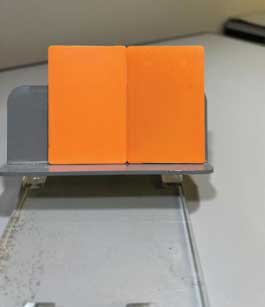
Speciality chemicals firm Syensqo that will showcase for the first time at K2025, following its spin-off from Solvay in 2023, will launch Amodel flame-retardant polypthalamide (PPA) HFFR-4133 Orange (OR), which is distinguished by its vibrant orange colour. Targeted at critical electric vehicle (EV) components, such as connectors and busbars, it offers immediate visual identification of live high-voltage components.
Syensqo adds its Amodel PPA not only meets but exceeds these safety expectations by retaining its bright colour even under prolonged heat exposure, ensuring compliance with industry standards such as ISO 6469-3, IEC 60664, and relevant UL specifications. It is also hot water mouldable and boasts a V0 rating, making it a choice for high voltage automotive applications.
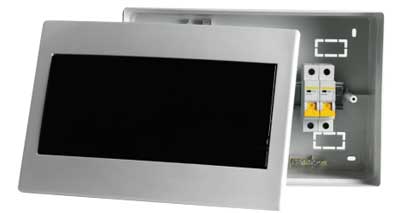
Meanwhile, engineering materials firm Envalior, which will also make its debut at K2025, will focus on a new Pocan PBT grade designed to meet the requirements of future highvoltage connectors in mobility as well as next-generation E&E components, supporting the upcoming transition of AI data centres to 800V HVDC power supplies.
Others include E-powertrain components made with Xytron PPS such as invertor/convertor busbars and terminal blocks. Xytron solutions are also available for IGBT boards, delivering a CTI value of 600 to meet the increasing electrical insulation and tracking requirements of new mobility applications. New PFASfree Stanyl PA46 grade will also be introduced for wear and friction applications in gears (including xEV) and a thermoplastic composite tape solution for lightweight EV motor brackets.
It will also showcase sustainable drop-in alternatives to fossilderived grades for miniature circuit breakers (MCBs), switches and connectors, including Durethan ECO (30% recycled content) and Durethan Blue (30% pre-consumer recycled content and 56% bio-based content) – halogen-free, flame-retardant PA6 grades.
Wacker’s silicone elastomers for power grids/e-mobility; Polyplastics’s PPS for busbars
In the area of grid expansion, the focus is on addition-curing solid silicone rubber for the production of hollow-core insulators such as German materials firm Wacker’s Powersil 1900 A/B. The product is supplied as a 2K system and is suitable for manufacturing processes that involve spiral extrusion.
And in electromobility, a silicone product for busbars is celebrating its debut. Busbars are basically aluminium or copper rails that distribute the current between the battery cells and modules. As nominal battery voltages in EVs are already in the range of 300 V to 900 V, the reliable insulation of busbars is a must.
At K2025, Wacker presents Elastosil R 531/60 for insulating the sheathing of busbars cost-effective. In the event of fire, the product ceramifies and forms an electrically insulating protective layer that reliably prevents short circuits, thus playing a vital role in passenger and fire safety of electric vehicles.
Another highlight is silicone laminates, which Wacker recently began producing on a commercial scale. They are electroactive and can, for example, be used as sensors in the field of digitalisation.
Also related to busbars, Polyplastics will announce the extension of Durafide PPS to lithium-ion battery components. Durafide PPS 6150T73 can maintain the insulation of busbars during thermal runaway in EV (LiB) batteries without using inorganic sheets. It maintains its shape and protects busbars even after being exposed to environments of 1,000°C for 30 minutes.
It will also launch a laser-weldable Durafide PPS grade with high transmittance improvement technology, since PPS has traditionally been considered difficult to use for laser welding, in terms of heat and chemical resistance.
Subscribe to Get the Latest Updates from IMA Please click here
©2025 Injection Moulding Asia. All rights reserved.
